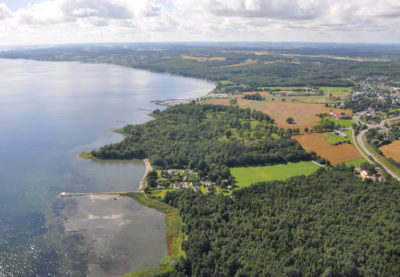This handout picture released on March 25, 2019 by Vestfold Fylkeskommune shows Funnplass,
where a ship's grave probably originated from the Viking Age has been discovered on a plain among the burial mounds in Borreparken in Vestfold, eastern Norway
Using ground-penetrating radar (GPR), experts found a ship-shaped anomaly near other Viking burial mounds in the Borre Park in Vestfold county, southeast of Oslo.
"The GPR data clearly show the shape of a ship, and we can see weak traces of a circular depression around the vessel. This could point to the existence of a mound that was later removed," Terje Gansum, leader of the department for cultural heritage management in Vestfold county, said in a statement.
He said researchers would carry out further investigations to try and assess the size of the preserved find.
Read the rest of this article...






